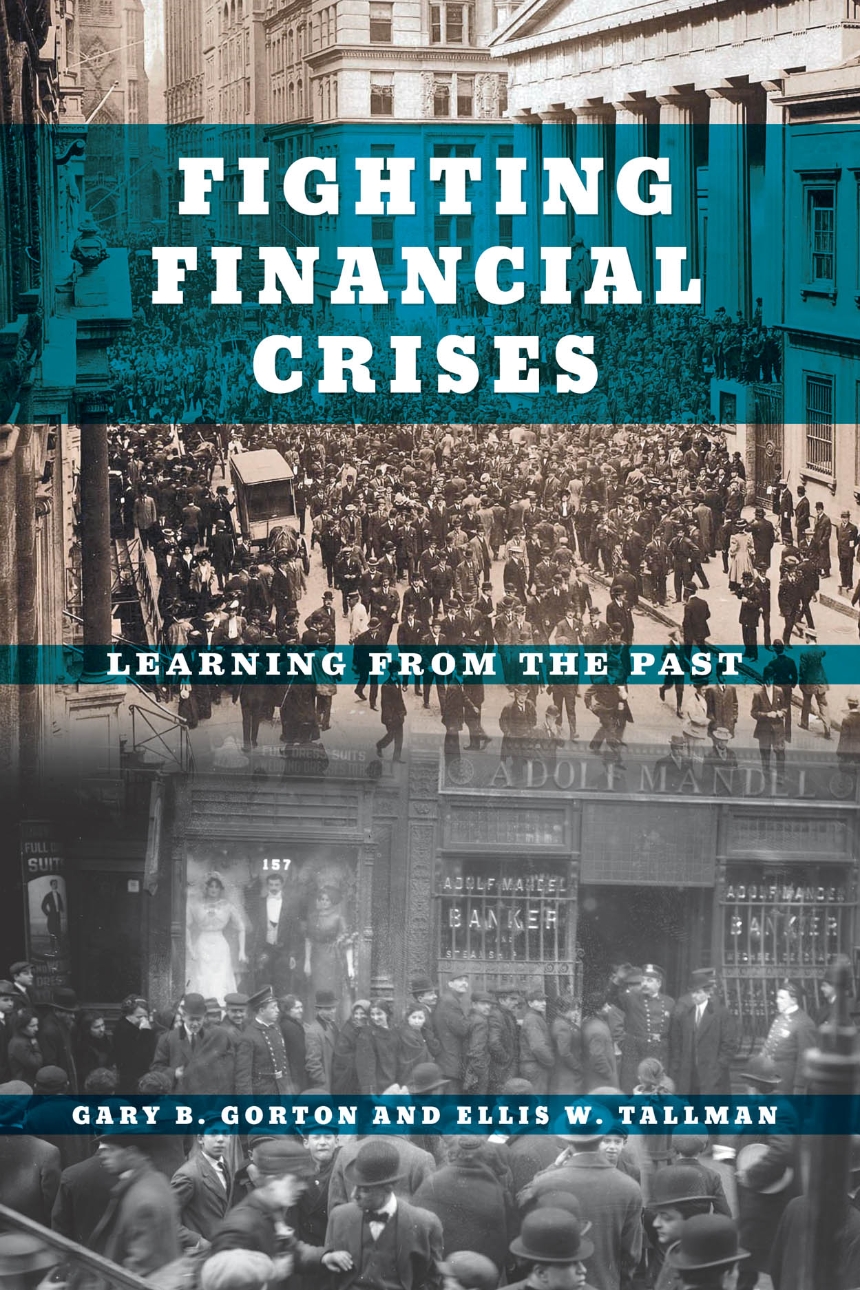Fighting Financial Crises
Learning from the Past
If you’ve got money in the bank, chances are you’ve never seriously worried about not being able to withdraw it. But there was a time in the United States, an era that ended just over a hundred years ago, when bank customers had to pay close attention to the solvency of the banking system, knowing they might have to rush to retrieve their savings before the bank collapsed. During the National Banking Era (1863–1913), before the establishment of the Federal Reserve, widespread banking panics were indeed rather common.
Yet these pre-Fed banking panics, as Gary B. Gorton and Ellis W. Tallman show, bear striking similarities to our recent financial crisis. Fighting Financial Crises thus turns to the past to better understand our uncertain present, investigating how panics during the National Banking Era played out and how they were eventually quelled and prevented. The authors then consider the Fed’s and the SEC’s reactions to the recent crisis, building an informative new perspective on how the modern economy works.
Yet these pre-Fed banking panics, as Gary B. Gorton and Ellis W. Tallman show, bear striking similarities to our recent financial crisis. Fighting Financial Crises thus turns to the past to better understand our uncertain present, investigating how panics during the National Banking Era played out and how they were eventually quelled and prevented. The authors then consider the Fed’s and the SEC’s reactions to the recent crisis, building an informative new perspective on how the modern economy works.
256 pages | 14 line drawings, 12 tables | 6 x 9 | © 2018
Economics and Business: Economics--History, Economics--Money and Banking
Reviews
Table of Contents
Preface
1 Fighting Financial Crises: Learning from the Past
2 The New York Clearing House Association
3 The Start of a Panic
4 What the New York Clearing House Did during National Banking Era Panics
5 Information Production and Suppression and Emergency Liquidity
6 “Too Big to Fail” before the Fed
7 Certified Checks and the Currency Premium
8 The Change in Depositors’ Beliefs during Suspension
9 Aftermath
10 What Ends a Financial Crisis? Historical Reminders
11 Modern Crises: Perspectives from History
12 Guiding Principles for Fighting Crises
Appendixes
Notes
References
Index
1 Fighting Financial Crises: Learning from the Past
2 The New York Clearing House Association
3 The Start of a Panic
4 What the New York Clearing House Did during National Banking Era Panics
5 Information Production and Suppression and Emergency Liquidity
6 “Too Big to Fail” before the Fed
7 Certified Checks and the Currency Premium
8 The Change in Depositors’ Beliefs during Suspension
9 Aftermath
10 What Ends a Financial Crisis? Historical Reminders
11 Modern Crises: Perspectives from History
12 Guiding Principles for Fighting Crises
Appendixes
Notes
References
Index
